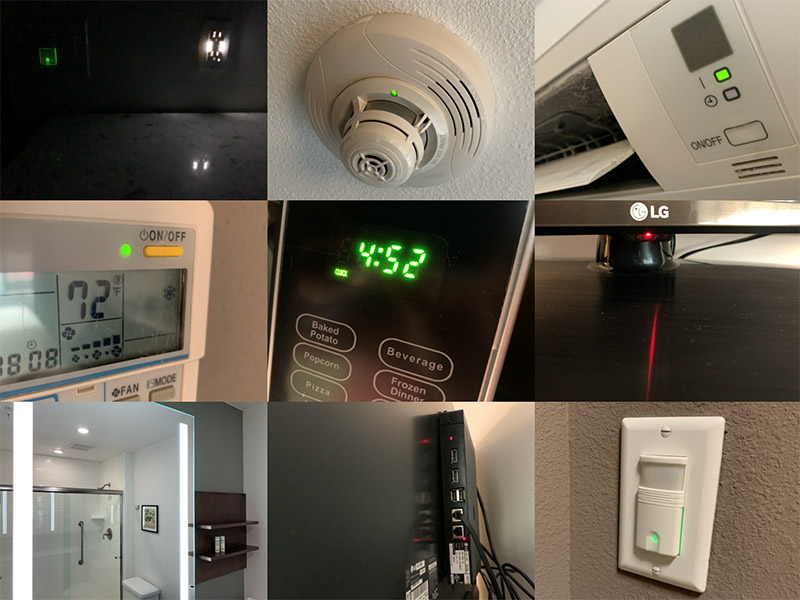By Alex Baker
I was a fan of A Few Minutes with Andy Rooney on 60 Minutes. Andy was born in Albany, NY, the capital of the Empire State, near my neck of the woods. Many of his commentaries would begin as human-interest stories and end as an airing of grievances about something societal and often trivial. To be sure, Mr. Rooney would sometimes venture into serious subjects, however, many of his segments were meandering and fun, rarely anything of consequence. He was two minutes of Seinfeld before Seinfeld was Seinfeld, if you will, served as a nice dessert to follow the heavy news meal of the preceding hour. Cutting from B-roll back to him seated behind his cluttered oak desk, he’d often close his segments with one frank statement that might resonate and stick with you, maybe even beyond the commercials that followed.
In February I took a trip to another state capital, Sacramento, and its charming neighbor, Davis. California is a gorgeous state and home to one in 10 IES Members who I have the pleasure of representing with state government. I hear Sacramento has an airport but last I checked getting there from Albany involves connections through Philadelphia, then Atlanta, LAX and Guam, so as usual I rented a car at SFO. This was a good decision, as I got to test out the 2020 Chevy Camaro SS convertible to which I was inexplicably upgraded at no cost, odometer 000011.
There I was I was cruising to Sactown with the top down, reflecting on a discussion I organized in San Francisco in early January with my IALD counterpart Emily Bowers. Gathered at the PG&E Energy Center, about 30 California IES and IALD Members shared their concerns and frustrations with Title 24, Part 6, California’s Building Energy Efficiency Standards. Members expressed concerns about the cost effectiveness of some measures given the market’s transformation to LED. We heard a lot about non-compliance resulting from conflicts with local safety codes, a lack of coordination with AHJs, and a shortage of suitable certified luminaires with which to execute their designs. The discussion helped to inform IES inputs entered into the California Energy Commission’s Title 24 docket in late March, kicking off the beginning of the 2022 code development cycle.
Passing mile after mile of fruit and nut trees I eventually pulled into Davis for the first California Energy Alliance (CEA) meeting of the year, held this time at the California Lighting Technology Center. Here the conversation also centered on Title 24, with concerns shared by many that the code is now micromanaging milliwatts, implementing too many changes to achieve minor impacts, and that code changes occur so frequently (every three years) that designers cannot develop a working knowledge before it changes again. We also discussed acceptance testing, the wisdom of switched receptacles, the necessity (or not) of utility revenue-grade circuit-level metering and recent progress on the CEA’s Outcome Based Code Initiative.
Later, Dr. Morgan Pattison stopped in to give a presentation. Discussing the importance of dark skies, Pattison shared a story of his visit to West Virginia where he was able to experience a nighttime so dark that he could not see his hand in front of his face. If you really think about it, he asked, how often do we achieve such darkness in our lives anymore? Yet the more we learn about light, the more we understand the importance of darkness.
 These thoughts stuck with me as I later retired to my hotel room in Davis. I drew the blinds, doused the lights and crawled into bed, falling asleep without delay thanks to jet lag. Mother Nature called in the middle of the night, and as we know, she doesn’t go to voicemail. As I stood up, the wired smoke detector above my head flashed two green 5-millimeter bullet LEDs every 5 seconds, like an airport beacon. No one could mistake its status; these stark, startling beams were bright enough to project my shadows onto the floor. Looking forward, the TV’s red LED indicator illuminated its own table stand, resulting in a laser beam effect that added a sense of drama and intrigue to my journey. Meanwhile, the air conditioner’s green LED provided good fill, and a festive color contrast.
These thoughts stuck with me as I later retired to my hotel room in Davis. I drew the blinds, doused the lights and crawled into bed, falling asleep without delay thanks to jet lag. Mother Nature called in the middle of the night, and as we know, she doesn’t go to voicemail. As I stood up, the wired smoke detector above my head flashed two green 5-millimeter bullet LEDs every 5 seconds, like an airport beacon. No one could mistake its status; these stark, startling beams were bright enough to project my shadows onto the floor. Looking forward, the TV’s red LED indicator illuminated its own table stand, resulting in a laser beam effect that added a sense of drama and intrigue to my journey. Meanwhile, the air conditioner’s green LED provided good fill, and a festive color contrast.
As I rounded the corner of the bed, the vacancy sensor near the room’s entrance had me on target with a green LED responding to my approach. Now scotopically adapted of course, it guided me as I opened the bathroom door and identified my target. The bathroom was almost over-lit by a cool white LED nightlight. As I entered, the occupancy sensor, having waited all night for me, energized at least 4,000 lumens in this tiny nearly all-white room with the swiftness of solid-state lighting. Squinting and blurting something unpleasant I’m sure, Title 24 crossed my mind as I slammed my hand on the sensor to shut it off.
Exiting the bathroom, the microwave’s green clock and the green LED on the thermostat sparkled. Behind the TV the typical cable box’s totally enclosed red LED (its soul?) shined through the box’s vents onto the wall, alongside an external red LED. My headphones were charging nearby, adding a little blue to the scene. I paused for a moment to observe the theatrics of this hotel room, my scotopic Yuletide disco, like so many others before it.
Drifting to sleep I thought, does the TV really need an indicator? The thermostat? Why? The light on my headphones tells me it’s charging. That’s useful. The air conditioner blows air; its power indicator states the obvious. That nightlight was bright. Shouldn’t that be a vacancy sensor? How much power and emissions for these billions (trillions?) of indicators? I wish it was dark in here…
There are many remaining energy savings opportunities and the smart people we’re working with at the CEC are wide open to our members’ ideas. I’m upbeat about making some meaningful code changes for the better.

